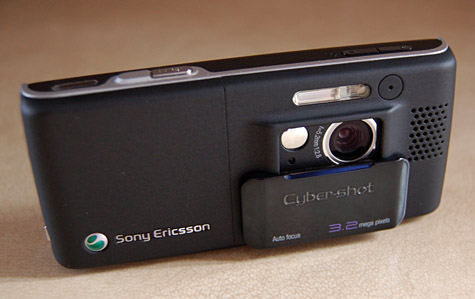
Outdoor photography with the Sony K800i mobile phone.
An antidote to lots of pixels..
By Ian Walker. U.K.
Introduction.
I have used a number of digital cameras over the years and it is interesting that I look back fondly to those early days of digital photography with just 1.3Mp to play with, my first camera being a Fuji DX10, it was slow and you had to take your time with its limited macro capabilities but it was fun trying squeeze the last ounce of performance from it. Today it seems month by month new multi million pixel complex cameras are introduced which may look tempting but I wonder how many of us can really use all those pixels and get bogged down with long menus.

The Sony K800i mobile phone, camera side. The auto focus lens is protected by a slide panel and fixed 'anti-reflection glass'.
The 'warm' rubber finish is a good grip in cold weather, hard wearing and easy to clean with a damp cloth, this contrasts with the slippery hard plastic or polished aluminium used on many a small digicam. This can look 'cool' in their multi colour options but usually is cool and slippery in the hand, for a small phone camera the ergonomics are admirable with nice placement of lens and shutter release which is of nice size and responsive. All the usual features of a good little camera are there like several white balance options, macro down to a few inches, a modest fill in flash, image size options and auto focus feedback 'lock' on the lcd.
Looking through advertising for lcd computer flat panel screens or laptops will show resolution typically no higher than 1920x1200 pixels or WUXGA, our typical 10 to 13Mp camera will need a few 'screen fulls' scrolling up and down and left to right to show all our picture hence a lot of the time after some cropping it is common to resize the picture to less than one or two mega pixels to suit the screen resolution, many of my images end up typically around 700x450 pixels for web articles. With printing, although Photoshop tells me I need a whole load of pixels to print a modest photo at 250 d.p.i. I find much lower figures can give acceptable results on glossy photo paper as long as I don't get my magnifying glass out!
For the most part the 'big cameras' stay at home and I use my trusty little Sony K800i mobile phone weighing all of 115 grams, requires no case and has a small auto focus f2.8 lens of only a few mm across, it also has a solid slide protector for the lens which quickly activates the camera from the phone operation and has a maximum resolution of 3.2 Mp. It takes me back a little from the ultra fast start up and shot taking of our modern camera to a more leisurely approach. It doesn't suit every situation but is small and very convenient. What is interesting is how well these cameras cope with the wide dynamic range of lighting found in landscapes where often I have had bad highlight clipping or strange colour balance in compacts and indeed in DSLR's these little phone cameras seem to be enjoy the challenge!
Dpreview on the Internet recently did a round up of compact digital cameras from Sony, Canon, Nikon etc and commented on all of them would take a much better picture than a phone camera but I think he missed the point in some respects as my Sony cost half of the typical one reviewed and is like a Swiss Army knife in that it's a phone, a camera and can play media too and is most likely to be in your pocket so not miss a photo opportunity while out walking. I think it provides the equivalent of the artists 'broad brush strokes' in that it captures the essence of mood, colour and texture in landscape without filling the fine detail that a more expensive camera would provide but is none the worse for it under most situations.
Some landscapes.
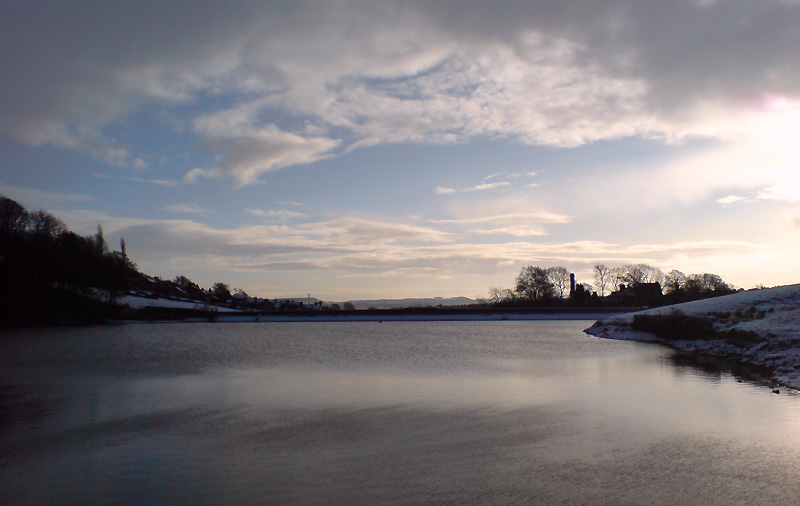
A sprinkling of snow at a local reservoir.
A pleasing colour balance showing the cold frosty feel fairly early in the morning.
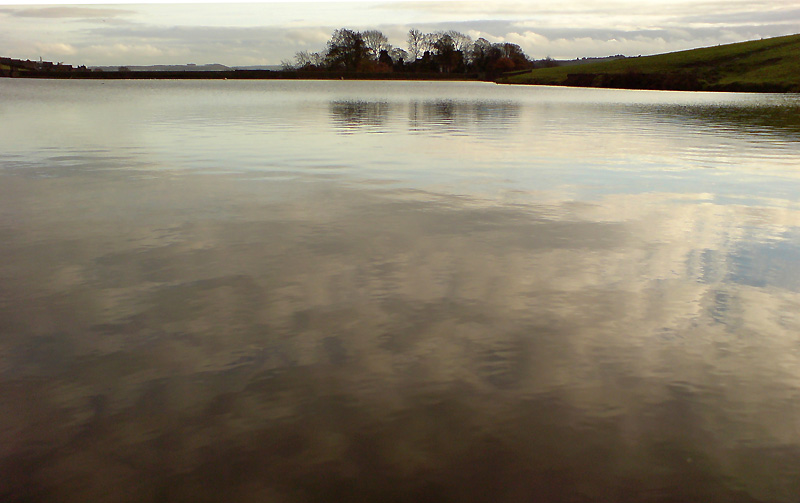
Reflections.
A similar shot to the first
picture on a milder day but with the main emphasis on the reflections
from clouds seen on the calm water.
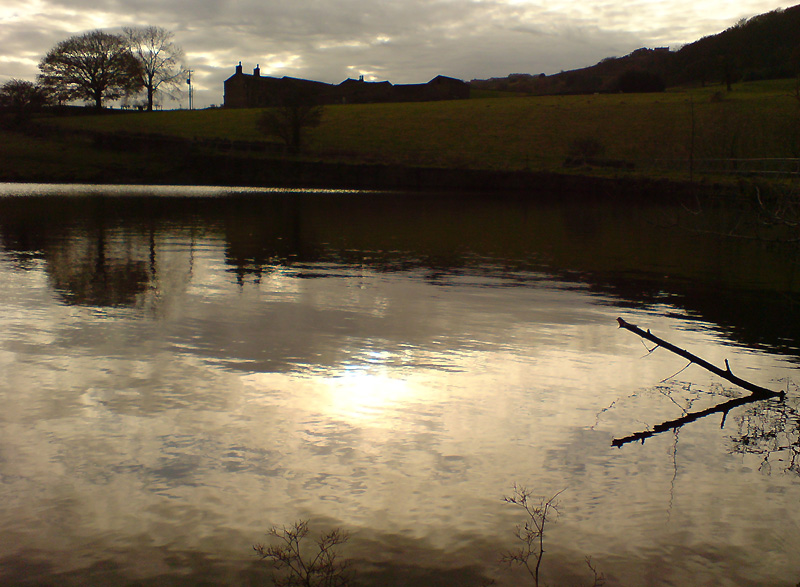
The old
farmhouse.
Towards the right and further up
the hill an old farm stands, the foreground branch and its reflection
balances the picture
in what would otherwise be a large expanse of water. I purposely went
for a 'darker feel' allowing the subtle colours in the clouds and water
to remain mostly free of highlight clipping as the camera can only do
so much with a wide dynamic range found in shots like these.
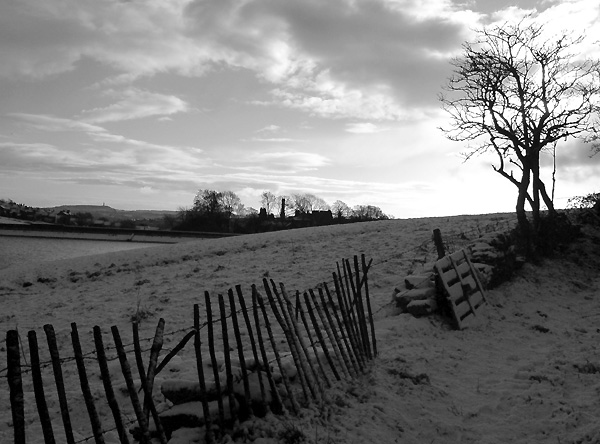
Track
leading to the farm.
Changing the
original colour image to black and white provides atmosphere to the
photo, the noise performance is reasonable for a phone camera.
Changing to black and white with compact cameras can emphasize noise in
darker areas and sky, this can occur with this
camera too like the shadow detail in grass giving it a colour mottled
look seen in the 'The Old Farmhouse' picture previously.
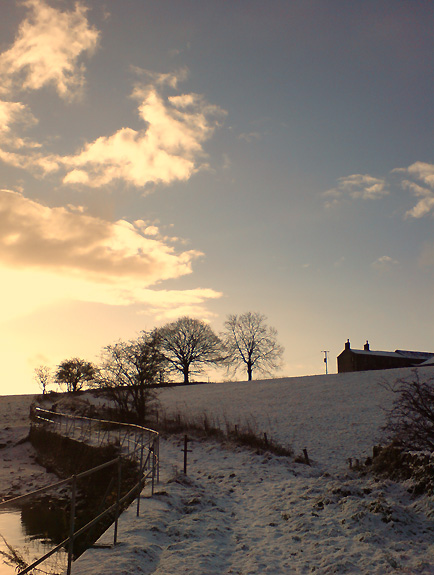
Track
leading to the farm.
A different time of day,
warmer tones in the sky and different perspective.
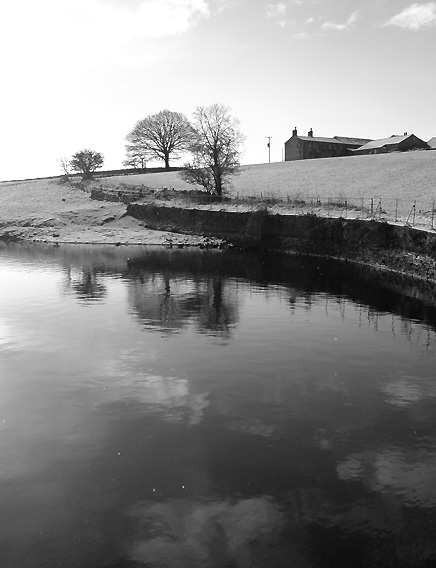
Looking
towards the farm.
A similar photo to the previous
shot but further down the track with me dangling the camera low down
above the waterline through the barrier, the cloud reflections in the
near water adds interest to the picture and again balances the expanse
of water with the more distant farm.
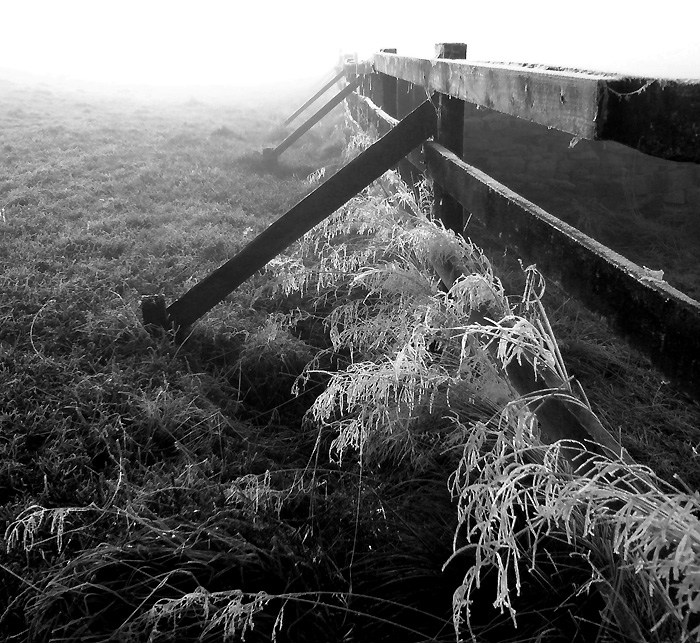
Frosty
grass.
Some local fields which provide
pasture mostly for sheep allow interesting photographs when there is
dense freezing fog, at some point this whole area is going to be
developed so shots like these remind us of what once was. The walk was
done after a couple of days where the moisture had built up over
successive freezing. Again a contrasty black and white shot can provide
a more dramatic look than a full colour one with simple textures like
these.
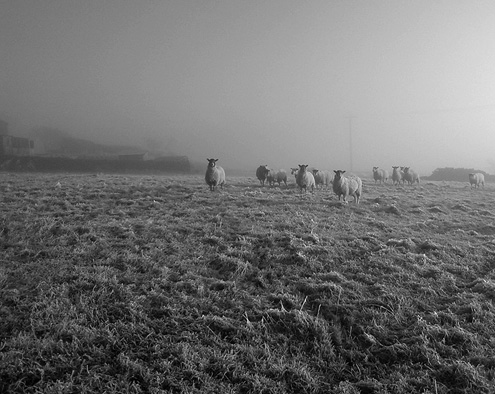
Cold sheep.
Walking back along the field
and the sheep mystically appear out of the gloom.
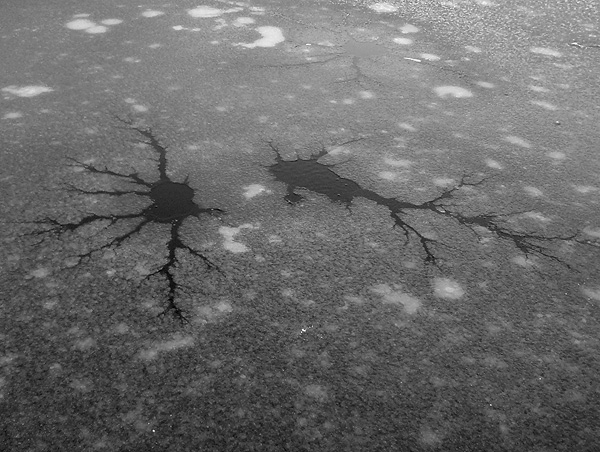
Frozen
pond.
Near the reservoir in previous
photos there is a pond, the water being shallower and not so much
influenced by the wind had frozen over and a slow thaw had created
these strange patterns in the ice. Bubbles could frequently seen coming
up from below which could be fish which inhabit these shallow ponds.
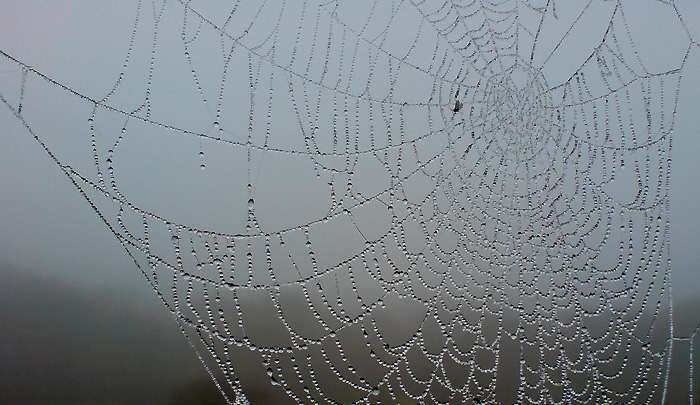
Droplets
caught in a web.
The Sony K800i makes a fair job of
macro having a close focus of a few inches and aided by the centre
focus square to compose the picture. Again a foggy day helps with the
background remaining free of distracting details like cottages and
trees.
Some flowers.
The following pictures were taken in the green houses and park area of Thornes Park, Wakefield. Again taking photographs can provide a record of what was seen as these were taken in 2007and early 2008, later this year due to lack of funds the flowers and plants have sadly been neglected.
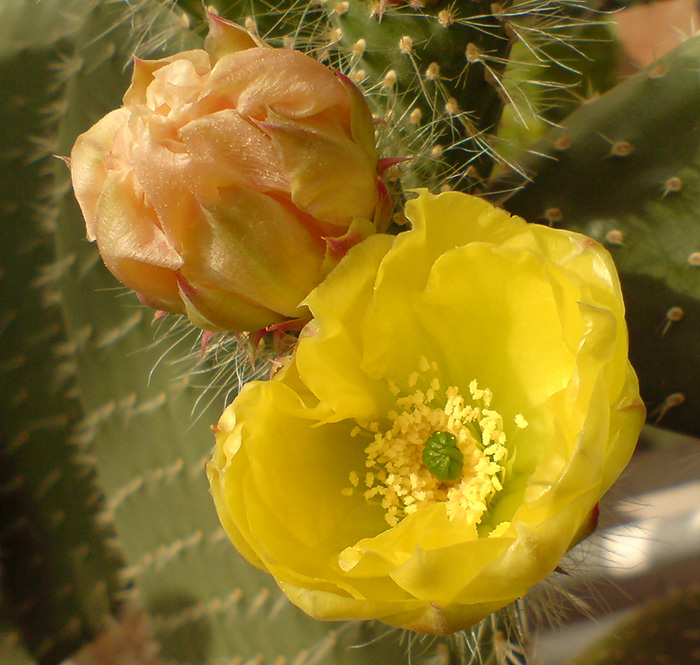
Cactus
flowers.
On a bright sunny day the
flowers of cacti provide plenty of rich vibrant colour and detail.
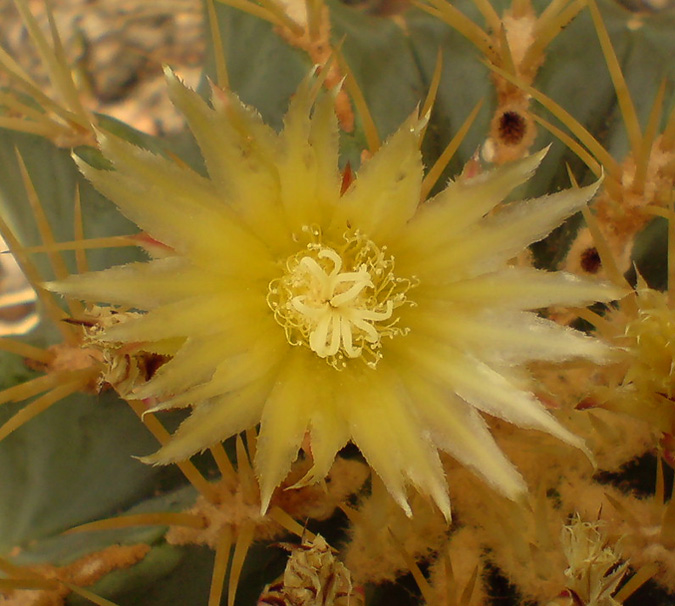
Cactus
flower.
Another wonderful flower on a
cactus.
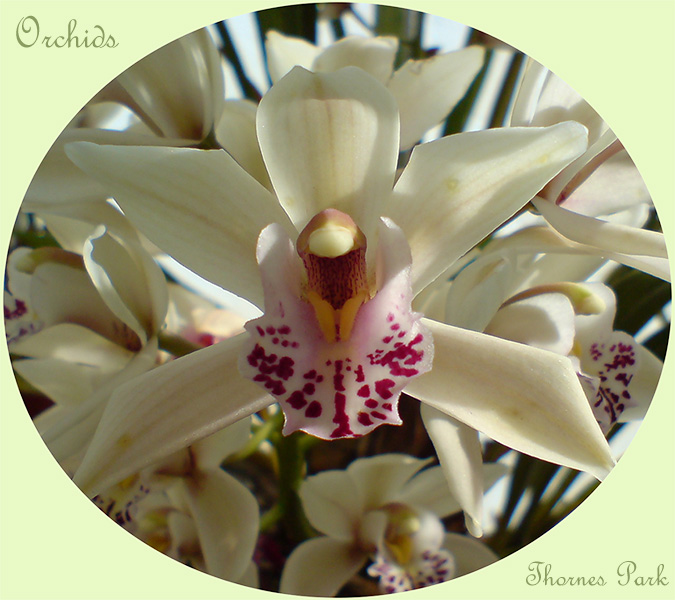
Orchids.
The very beautiful colour and
textures of orchids.
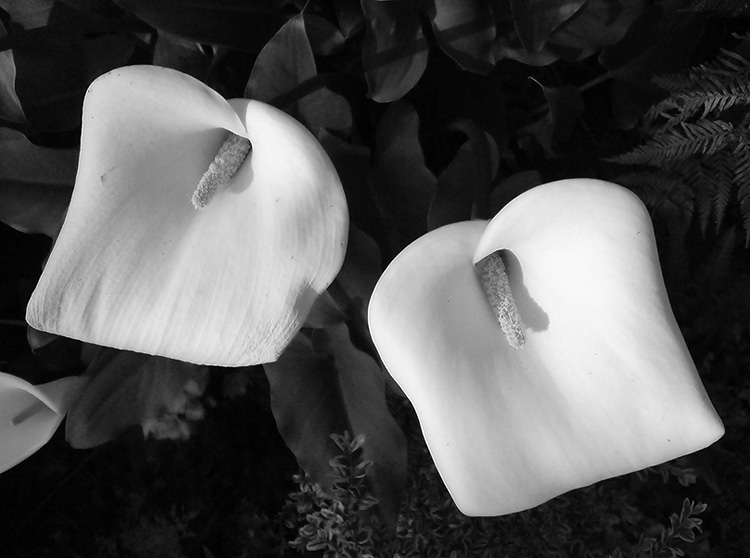
Lily
flowers.
With a large dynamic range between foliage and backdrop the Sony has
coped well. Just holding onto the subtle texture and shades in the
flowers.
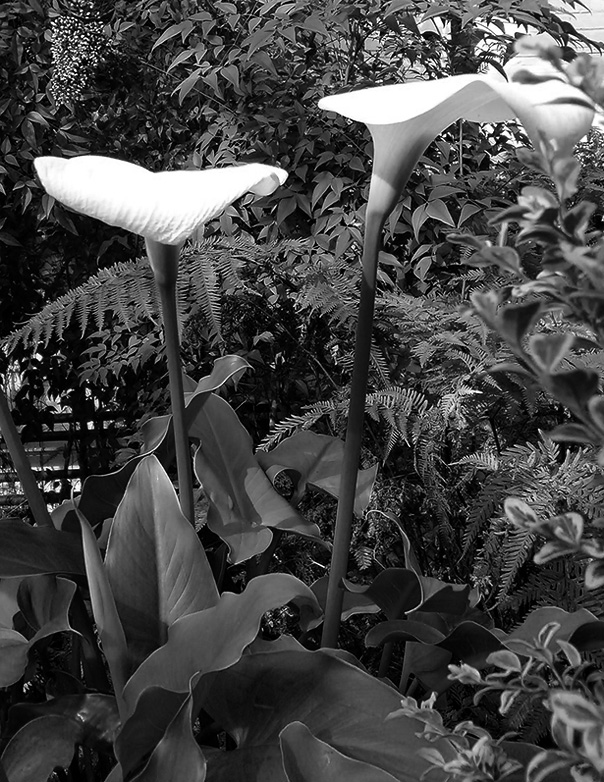
Lily
flowers.
A complex backdrop with
many leaf shapes, the tiny lens provides good depth of field by default.
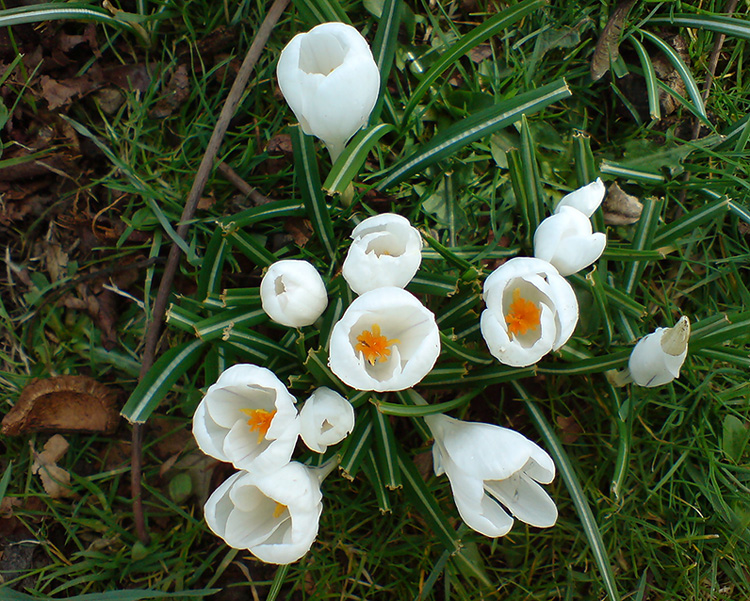
Crocuses.
Spring time and the crocuses growing out in the open under the trees in the park.
Ending thoughts.
Although I have described the Sony K800i, there are many like it, some will be better, others not so but a quick glance of a brochure and specifications can usually point us in the right direction for specific requirements. These are just a few of the pictures taken with this little phone, sadly in time I think there will be a tendency for the phone manufacturers to follow the band wagon and increase the pixel counts to 8Mp and beyond as some are now just for the sake of easy technology being available. I think these phones work best with a modest pixel count and there may be the possibility although the pixel count gets higher the quality of the lens is inadequate for the job. Time will tell.
Comments to the author Ian Walker are welcomed.
Published in the December 2008 edition of Micscape.
Please report any Web problems or offer general comments to the Micscape Editor .
Micscape is the on-line monthly magazine of the Microscopy UK web site at Microscopy-UK
©
Onview.net Ltd, Microscopy-UK, and all contributors 1995
onwards. All rights reserved.
Main site is at
www.microscopy-uk.org.uk
with full mirror
at
www.microscopy-uk.net
.